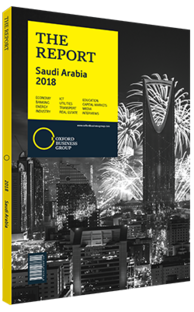Ahmed Alkholifey, Governor, Saudi Arabian Monetary Authority (SAMA): Viewpoint

Viewpoint: Ahmed Alkholifey
The story of Saudi Arabia over the past few decades has been its continuing integration into the global economy. This has provided opportunities and challenges in both the real and financial economy. In order to ensure a monetary and financial environment conducive to growth and prosperity, SAMA is committed to maintaining exchange rate stability, while adjusting domestic banking and monetary policies to meet changing conditions in global financial markets.
The tightening liquidity that occurred over the past year was the result of several simultaneous factors, mainly the decrease in the growth of deposits and increased government debt issuance. SAMA’s prudential measures, including relaxation of the loan-to-deposit ratio and liquidity injection, have helped address the liquidity pressures. The improved liquidity should continue as the next round of domestic government bond issuances will be conducted with greater attention to market sentiment. The improved situation is reflected in the Saudi Arabian Interbank Offered Rate, which fell from around 2.4% in September 2016 to 1.8% in September 2017. Bank balance sheets are healthy: non-performing loans are only 1.4% of total loans, and lending to the private sector, which bottomed in December 2016, is slowly recovering.
Monetary and macroprudential tools can be used to respond appropriately to market conditions in response to the actions of the Federal Reserve. We do not envisage that interest rate hikes will have a significant impact on the Saudi banking sector. Saudi banks are net creditors in the global banking system, so the impact of dollar rate hikes is confined, and the cost of funding is inherently low due to the composition of the sector’s deposit base.
The number of participants in the banking system has grown, including branches of non-domestic banks. The promising Saudi landscape continues to draw interest from a wide range of foreign financial institutions, and SAMA welcomes this as part of its strategy to broaden the financial sector by providing opportunities to both overseas and local banks. In the past five years, SAMA has issued five new licences. SAMA’s criteria provide opportunities for newcomers, who can add value to the financial system in line with Vision 2030. For example, in addition to minimum requirements related to capital, liquidity and senior management quality, our strategy also favours licensing institutions that can bring innovation and technology, improve financial inclusion, and finance our small and medium-sized enterprises (SMEs) and residential real estate sector.
Momentum is gathering for early-stage financing for SMEs through the development of venture capital and private equity networks, which are currently being supported by the SME Authority (SMEA) and the Public Investment Fund. SAMA regularly meets with SMEA representatives to ensure that policy is aligned to foster a comprehensive SME financial ecosystem. Finance companies may be the best vehicles to assess creditworthiness and undertake direct lending, and there could be a fund that invests in SMEs.
Finance companies could serve the micro and small segments of the SME market, and the banking system could serve the medium segment and businesses that have grown. In Saudi Arabia, SMEs’ contribution to GDP has been modest, which can be attributed to the predominance of the oil and public sectors.
In conclusion, SAMA plays an enabler role in Vision 2030, and, therefore, seeks to provide supportive monetary conditions. SAMA’s prudential role takes into account the impact of structural reforms on the challenges facing financial institutions, and continues to take an approach that is transparent and simple to understand. The banking system is well placed to accommodate the impact of Federal Reserve rate hikes.
Meanwhile, the riyal-dollar peg will continue to be the anchor of our monetary policy as the economy starts to diversify. Currently, SAMA’s main priority is to maintain monetary stability and support Vision 2030.
You have reached the limit of premium articles you can view for free.
Choose from the options below to purchase print or digital editions of our Reports. You can also purchase a website subscription giving you unlimited access to all of our Reports online for 12 months.
If you have already purchased this Report or have a website subscription, please login to continue.

